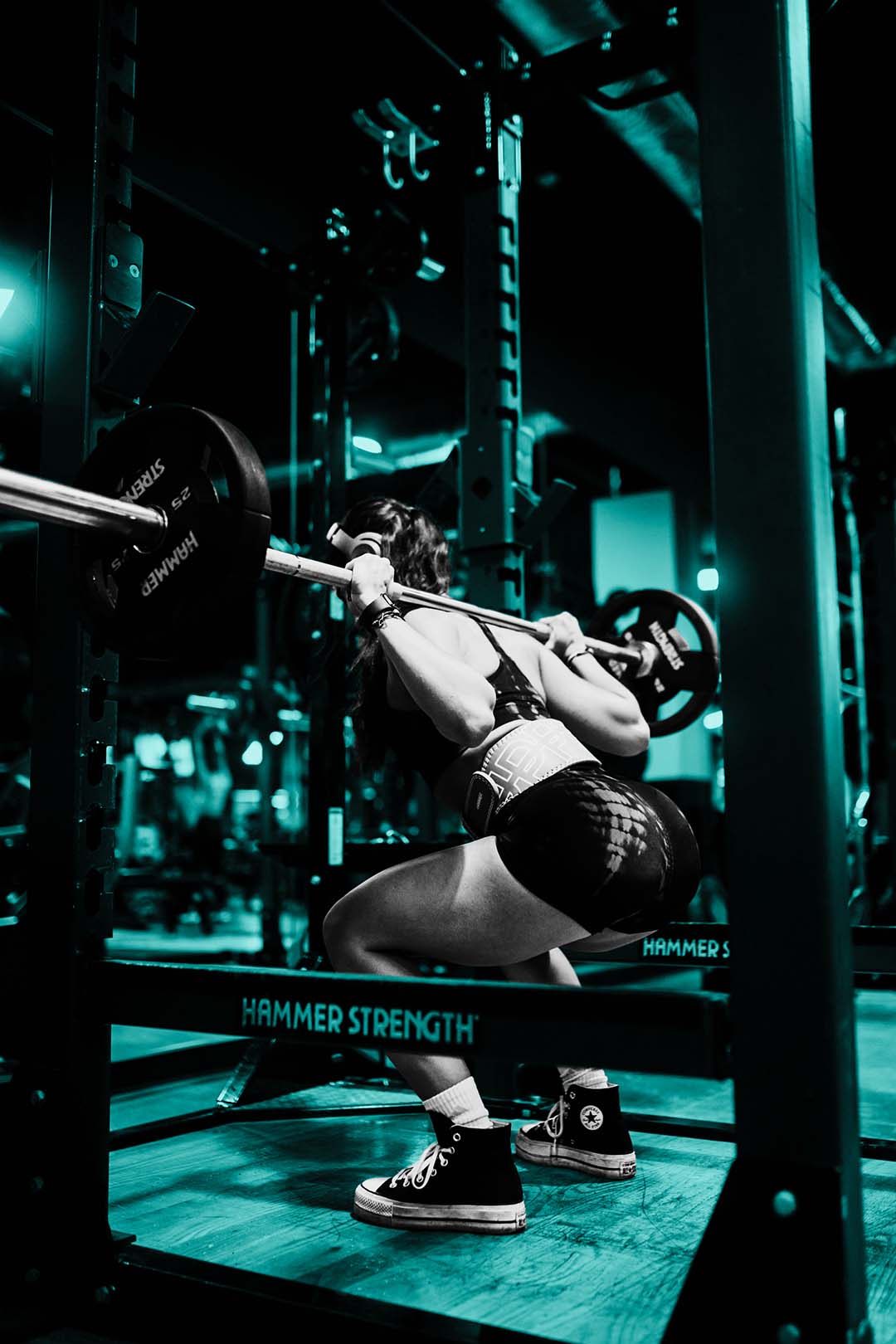Squatting is one of the most functional movements. We squat to sit down, pick stuff off the floor, etc. It's an everyday movement yet somehow it's one of the exercises that a lot of lifters have improper form when performing it. This can lead to poor muscle activation and an increased risk of an injury - and time wasted squatting!
The last thing we want is for your time and effort at the gym to go to waste, so we've put together 6 of the most common mistakes in squats and how to fix them. That way you can perfect your barbell squat form and start making the gains you've been wanting!
Not going low enough
Many might think that going low might mess up your back or hurt your knees, but it's actually the opposite. Limiting your range-of-motion and now going low enough hurts your knees because the force of the barbell won't shift onto your hips until you reach parallel. Not only can it increase your risk of an injury, but it reduces the amount of muscle you build on your legs!
Going low on a barbell squat is not easy but with practice, you'll get there! If you are unable to get low on a barbell squat, take a step back. Start by focusing on improving your hip and ankle mobility. Implementing mobility exercises in your routine will help prep your joints and increase their range of motion. Aside from that, take a break from the barbell squat and try a different squat variation like the Goblet squat. Going heavy with a barbell is great, but like we mentioned earlier, neglecting proper technique will lead to poor muscle activation.
Not using a lifting gear on heavy sets
If you want to get heavier on your squats, don't neglect using lifting gear, like a lifting belt and knee sleeves!
Weightlifting belts are a great piece of supportive lifting gear for your heaviest squats and even more compound exercises. They are designed to increase intra-abdominal pressure to provide a stable base for the spine and by doing this you are able to keep proper positioning through your squat.
Knee sleeves are great for anyone who struggles with knee pain or just need a little compression to help support and stabilize the knee joint. They work by adding warmth and compression to increase blood flow which allows you have better control when squatting while also making it less strenuous on your joints.
Most importantly, using a lifting gear when squatting can help you lift heavier, safely. You'll be able to squat more and hit PRs which in turn helps you build more muscle. A high-quality lifting belt and a pair of knee sleeves – like UPPPER's Lifting Belts and Knee Sleeves - make a huge difference!
Lifting the heels or toes off the floor
You should drive through your heels when you power back up to the starting position, however, don't focus it on so much that the balls of your feet begin to rise. Make sure to keep your feet firmly planted on the ground throughout the entire squat movement to avoid losing your balance.
Letting your knees cave inward
This is a common mistake a lot of lifters make, but doing this can stress your knees and lower back, and even damage ligaments.
To avoid this always make sure your knees track laterally above your feet, not too far out. If you find that your knees still drift together, place a short resistance band around your knees. This will help activate the correct muscles to keep your knees in alignment.
Hunched or hyperextended back
This is a mistake you definitely need to correct if you're making it! A rounded or arched back can not only strain your lower back, but if using a heavy weight, it can compress your spinal discs.
To avoid this from happening, make sure that your spine is in a neutral position when you squat. Do this by puffing your chest up and pulling your shoulders back. At the top of the movement, make sure that you're squeezing your glutes to naturally cause a slight pelvic tilt. Avoid thrusting your hips forward because it'll cause your back to hyperextended. You can also have a workout buddy watch you perform your squat to ensure your back isn't hunched or hyperextended.
Bad neck positioning
This might not be on your mind when you're squatting, but where you look is actually important. Looking up when you squat or in different directions can place your spine and neck in an unsafe position and potentially lead to an injury.
To avoid this, keep your head in a neutral position and look a few feet ahead of you.
Start squatting the right way
Now you have everything you need to squat with proper form and start reaping those benefits!! However, if you don't have an UPPPER Belt or Knee Sleeves to help support you on your heaviest squats yet then this is your sign to get them...
>> Shop UPPPER <<

